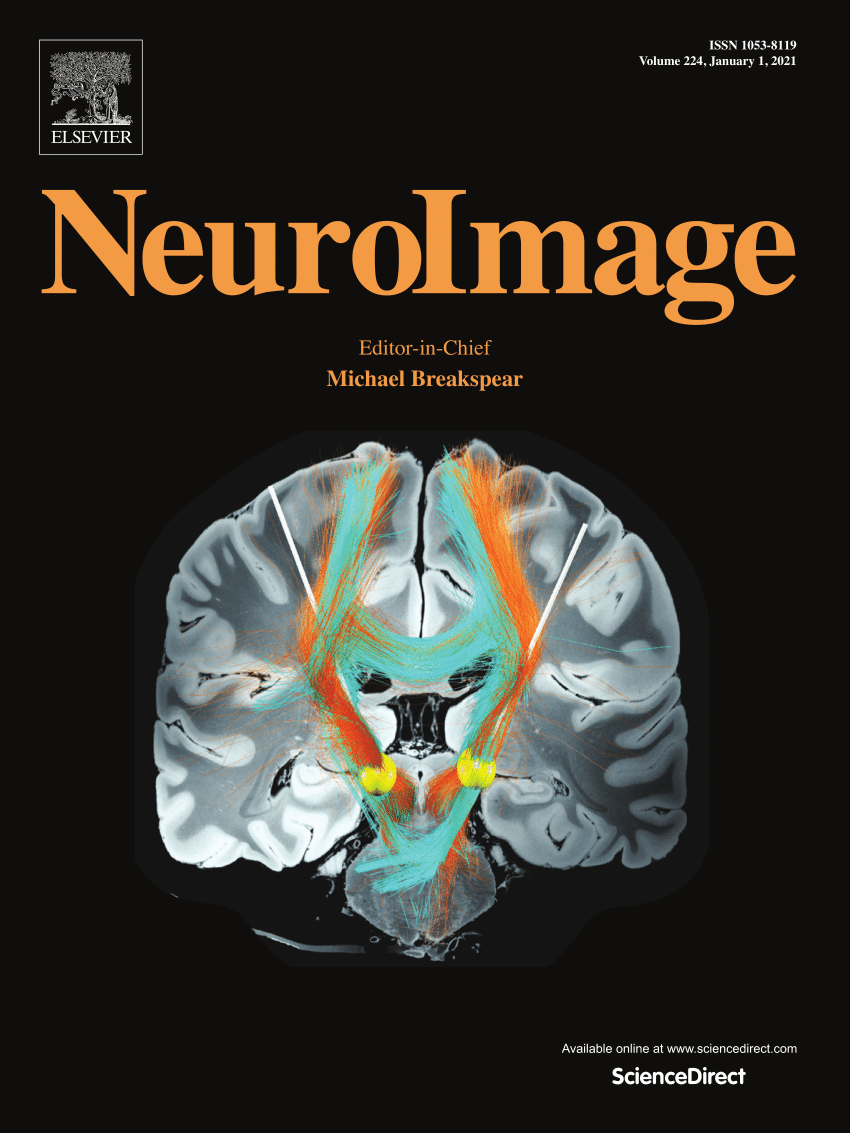赫氏回和颞极:语言的皮层侧化
IF 4.7
2区 医学
Q1 NEUROIMAGING
引用次数: 0
摘要
语言的左侧化被认为是由于大脑半球专门处理快速变化的信息。虽然听觉皮层组织的半球间差异支持这一观点,但整个大脑皮层的宏观结构尚未从这一角度进行深入研究。本研究利用人类连接组计划青年成人数据集(N=1113)研究了大脑皮层表面积和厚度的半球不对称性及其与口语阅读发音分数的关系。Heschl回的表面积最左侧化,而颞极的厚度最右侧化。这些区域对应于语音的核心成分:声音和意义。值得注意的是,它们的结构特征是唯一与发音得分有显著相关性的特征。此外,参与发音处理的布洛卡区后部(厣旁)呈现左侧化,与右侧化的前部形成鲜明对比。与右侧同源区相比,左半球语言区在很大程度上更薄、更扩展,白质与灰质的比例更大。皮质厚度与表面积成反比。听觉相关语言区域的侧向性及其结构与口语阅读中发音的相关性支持了语言的听觉基因基础。更薄、更有效的大脑皮层具有更大的表面积和更多的髓鞘,这可能是语言左半球优势的基础。更薄、更广的大脑区域与更多的髓鞘化、更宽的皮质柱和柱间空间有关。这就有可能形成一个由相互连接的离散信息单元组成的快速网络,以支持语言对快速分类处理的要求。本文章由计算机程序翻译,如有差异,请以英文原文为准。
Heschl’s gyrus and the temporal pole: The cortical lateralization of language
The left lateralization of language has been attributed to hemispheric specialization for processing rapidly changing information. While interhemispheric differences in auditory cortex organization support this view, the macrostructure of the entire cerebral cortex has not been thoroughly examined from this perspective. This study investigated hemispheric asymmetries in cortical surface area and thickness and their relationship to pronunciation scores from oral reading using the Human Connectome Project Young Adult dataset (N=1113). Heschl’s gyrus had the most left-lateralized surface area, while the temporal pole showed the strongest right-lateralization in thickness. These areas correspond to the core components of speech: sound and meaning. Notably, their structural features were the only ones also yielding a significant correlation with pronunciation scores. Additionally, Broca’s area’s posterior region (pars opercularis), involved in articulatory phonological processing, showed leftward lateralization, contrasting with the right-lateralized anterior portions. Left-hemisphere language areas were largely thinner and more extended than their right-sided homologs with a larger white-to-gray matter ratio. Cortical thickness was inversely related to surface area. The lateralization of auditory-related language areas and their structure’s correlation with pronunciation in oral reading supports a genetically based auditory foundation for language. A thinner, more efficient cortex with larger surface areas and increased myelination likely underlies the left-hemispheric dominance of language. Thinner, more extended brain areas have been linked to more myelination and wider cortical columns and intercolumnar space. This provides the potential for a fast network of interconnected, discrete information units able to support language’s demands of rapid categorical processing.
求助全文
通过发布文献求助,成功后即可免费获取论文全文。
去求助
来源期刊

NeuroImage
医学-核医学
CiteScore
11.30
自引率
10.50%
发文量
809
审稿时长
63 days
期刊介绍:
NeuroImage, a Journal of Brain Function provides a vehicle for communicating important advances in acquiring, analyzing, and modelling neuroimaging data and in applying these techniques to the study of structure-function and brain-behavior relationships. Though the emphasis is on the macroscopic level of human brain organization, meso-and microscopic neuroimaging across all species will be considered if informative for understanding the aforementioned relationships.
 求助内容:
求助内容: 应助结果提醒方式:
应助结果提醒方式:


